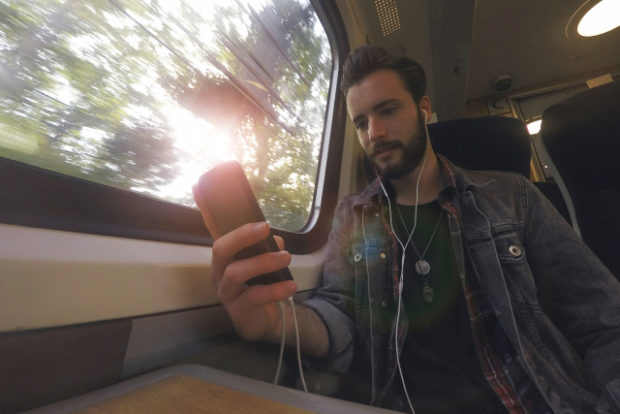Researchers have estimated coronavirus transmission risk for rail travel

The study showed that passengers traveling in seats directly adjacent to an infected patient suffered the highest transmission rate, with an average 3.5% becoming infected with COVID-19. Image: SolStock/Istock.com
If you travel by train with someone with COVID-19, what is your risk of being infected? To answer this question, researchers at Southampton University in the United Kingdom carried out a study in collaboration with the Chinese Academy of Sciences, the China Academy of Electronics and Information Sciences, and the Chinese Center for Disease Control and Prevention.
The results, published in the journal Clinical Infectious Diseases, are based on a model derived from high-speed train routes in China. The data comes from the period between December 19, 2019 and March 6, 2020 and involved 2,334 infected (or “index”) patients and 72,093 of their close contacts. The length of the trips varied between less than an hour and eight hours.
The study’s authors found that for passengers seated less than three rows (lengthwise) and five columns (from front to back in the train) from an infected person, between 0 and 10.3% caught the virus. The average rate of transmission between these “close contact” travelers was 0.32%.
Transmission risk increases according to seat proximity
The study also showed that passengers traveling in seats directly adjacent to an index patient suffered the highest transmission rate, with an average 3.5% catching the virus. For those seated in the same row, the rate was 1.5%.
However, the study’s authors were surprised to discover that the risk of catching the virus from sitting in a seat previously occupied by an index patient was only 0.075%.
“Our study shows that although there is an increased risk of COVID-19 transmission on trains, a person’s seat location and travel time in relation to an infectious person can make a big difference as to whether it is passed on. The findings suggest that during the COVID-19 epidemic it is important to reduce the density of passengers and promote personal hygiene measures, the use of face coverings and possibly carry-out temperature checks before boarding,” stated Dr. Shengjie Lai, the study’s lead author.
“It shows that the transmission risk not only relates to the distance from an infected person, but also the time in their presence. We hope it can help to inform authorities globally about measures needed to guard against the virus and in turn help to reduce its spread,” stated Professor Andy Tatem, director of WorldPop, a population mapping company that participated in the research. NVG
RELATED STORIES:
New research may explain why some COVID-19 patients lose their sense of smell
UK women and young people’s mental health worst-affected by the pandemic—study
For more news about the novel coronavirus click here.
What you need to know about Coronavirus.
For more information on COVID-19, call the DOH Hotline: (02) 86517800 local 1149/1150.
The Inquirer Foundation supports our healthcare frontliners and is still accepting cash donations to be deposited at Banco de Oro (BDO) current account #007960018860 or donate through PayMaya using this link.